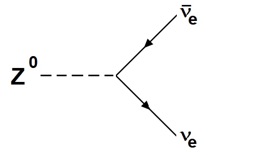The Data Portfolio is a compendium of particle physics classroom activities organized by Data Strand, Level of student engagement, Curriculum Topics and NGSS Standards. All materials are available under the Creative Commons CC BY-NC-SA 4.0 license.
Follow the links provided for information about using the Data Portfolio to plan your students’ experience. Level descriptions explain the data analysis skills that students apply at each level: tasks in Level 0 are simpler than those in Levels 1 and 2...
...While each level can be explored individually, students who start in one level and progress to more complex levels experience increasingly engaging and challenging tasks. These activities are aligned with NGSS Standards, particularly NGSS Practices.
Each Curriculum Topic provides connections between topics routinely covered in physics class and particle physics content and methods. Use the menus to find activities related to the content you are currently covering. Watch this screencast to learn more about sorting these activities.
We are making Spanish Language versions of the activities. To find the activities with Spanish versions, use the Curriculum Topics menu, scroll to the bottom, select Spanish Language then Apply.. Special thanks to Danelix Cordero-Rosario from the Puerto Rico Center for providing these translations.
QuarkNet has entered the world of data science. Use the Curriculum Topic menu to locate the Skill: Coding option then Apply.
We want your feedback on how the activities worked for you. Please complete the feedback form to help us improve our activities.
| Activity Name | Data Strand | Level | Curriculum Topics | NGSS Practices |
|---|---|---|---|---|
 Signal and Noise: The Basics
Signal and Noise: The BasicsStudents analyze signals and noise first in audio and video forms and then look at signals and noise from physics measurements. |
Cosmic Ray, LHC, Neutrino | Level 0 | Instrumentation, Skill: Uncertainty, Waves & Interference | 4, 5, 6, 7, 8 |
 Signal and Noise: Cosmic Muons
Signal and Noise: Cosmic MuonsIn this introductory tutorial, students learn about how to distinguish muon signals from background and instrumental noise. |
Cosmic Ray | Level 1 | Instrumentation, Quantum Mechanics, Waves & Interference, Skill: Histograms, Skill: Uncertainty | 4, 5, 6, 7, 8 |
 Particle Transformations
Particle TransformationsStudents discover the rules of particle transformations using transformation diagrams. |
Cosmic Ray, LHC, Neutrino | Level 1 | Conservation Laws, Nature of Matter, Skill: Developing Models, Standard Model | 1, 2, 4, 6, 7 |
 Making Tracks II
Making Tracks IIStudents analyze tracks in a bubble chamber. |
Cosmic Ray, LHC, Neutrino | Level 1 | Conservation Laws, Nature of Matter, Skill: Developing Models, Standard Model | 1, 2, 4, 6, 7 |
 QuarkNet STEP UP: Careers in Physics
QuarkNet STEP UP: Careers in PhysicsLesson #2 in QuarkNet STEP UP Series on encouraging the study of physics. |
Level 1 | |||
 How Speedy are These Muons?
How Speedy are These Muons?In this activity, students use authentic detector data to apply simple 1D kinematics (v=d/t), interpret graphical data, and evaluate measurement uncertainties. |
Cosmic Ray | Level 1 | Kinematics, Nature of Matter, Skill: Graphing, Skill: Histograms, Skill: Uncertainty | 2, 3, 4, 5, 7, 8 |
 Cosmic Watch Lab Suite
Cosmic Watch Lab SuiteThis Cosmic Watch Suite of data activities describes experiments that can be done either at the singles or two-fold rate. |
Cosmic Ray | Level 1 | Nature of Matter, Quantum Mechanics, Skill: Developing Models, Skill: Graphing, Skill: Uncertainty | 1, 2, 4, 5, 6, 7 |
 Histograms: Uncertainty
Histograms: UncertaintyStudents construct histograms, identify the best value to represent the data, and report the uncertainty in their answers. |
Cosmic Ray, LHC, Neutrino | Level 1 | Skill: Developing Models, Skill: Histograms, Skill: Uncertainty | 4, 5 |
 Angles and Dimuons
Angles and DimuonsThis activity is based on the data analysis used for World Wide Data Day, |
Cosmic Ray, LHC | Level 1 | Conservation Laws, Nature of Matter, Skill: Developing Models, Skill: Histograms, Skill: Uncertainty | 2, 4, 5, 6, 7, 8 |
 What Heisenberg Knew
What Heisenberg KnewHeisenberg knew that, at the quantum level, we cannot know everything, at least not all at once. Students explore uncertainties in measurements of complimentary variables to find this out for themselves. |
Neutrino | Level 1 | Kinematics, Quantum Mechanics, Skill: Coding, Skill: Developing Models, Skill: Graphing | 2, 4, 5, 6, 7, 8 |